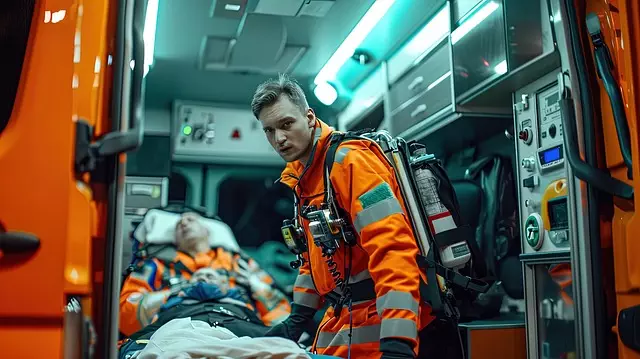In rideshare crash litigation involving cerebral trauma in Queens, legal professionals must grasp the complex diagnostic landscape of brain injuries, from concussions to traumatic brain injuries (TBIs), as these conditions can have significant long-term impacts on victims. Queens' distinct traffic patterns and urban environment present unique challenges in crash reconstruction and liability determinations for cases involving head trauma, necessitating a thorough understanding of cerebral trauma dynamics.
In the dynamic landscape of urban mobility, rideshare services have transformed travel in The Bronx. However, as popularity grows, so does the complexity of litigation surrounding crashes involving these vehicles. This article delves into the intricacies of rideshare crash litigation, focusing on cerebral trauma to the head—a significant concern with implications extending to Queens and beyond. We explore legal strategies, rights of victims, and the evolving regulatory environment in response to this burgeoning issue.
- Understanding Rideshare Crash Litigation in The Bronx
- Cerebral Trauma to the Head and Queens: A Focus on Legal Implications
Understanding Rideshare Crash Litigation in The Bronx

Rideshare crash litigation in The Bronx involves a complex legal landscape where victims of vehicular accidents seek justice and compensation. These cases often center around significant issues such as driver negligence, liability, and the potential for severe injuries, particularly cerebral trauma to the head. Queens, being part of New York City, has seen its share of rideshare crashes that have led to extensive litigation.
In The Bronx, as in other urban areas, rideshare companies like Uber and Lyft face increasing scrutiny due to the high volume of trips and potential for collisions. Litigation arising from these crashes can involve complex legal arguments regarding driver status, insurance coverage, and the varying degrees of responsibility between drivers, passengers, and the companies themselves. Cerebral trauma to the head is a particularly serious injury that often requires specialized medical testimony to establish its cause and extent in rideshare crash litigation.
Cerebral Trauma to the Head and Queens: A Focus on Legal Implications

In rideshare crash litigation, focusing on cerebral trauma to the head is crucial, particularly in cases arising from incidents occurring in Queens. Cerebral trauma, affecting the brain due to a sudden impact or acceleration-deceleration force, can lead to severe and long-lasting effects on an individual’s cognitive abilities and overall quality of life. In the context of Queens, where traffic congestion and diverse road conditions are prevalent, understanding the legal implications of head injuries is essential.
Legal professionals must consider the diagnostic challenges and medical complexities surrounding cerebral trauma. This includes assessing various types of brain injuries, such as concussions, diffuse axonal injuries (DAIs), or more severe forms like traumatic brain injuries (TBIs). The legal system needs to recognize the potential for long-term disabilities and cognitive impairments resulting from these injuries, which may affect a victim’s ability to work, perform daily tasks, and engage in social activities. Moreover, Queens’ specific traffic patterns and urban environment introduce unique variables that can impact crash reconstruction and liability determinations related to cerebral trauma cases.
Rideshare crash litigation in The Bronx, with a specific focus on cerebral trauma to the head and its legal implications in Queens, highlights the complex interplay between technology, safety, and personal injury law. As these cases continue to evolve, understanding the unique challenges and potential outcomes is crucial for both victims seeking justice and legal professionals navigating this dynamic landscape. The pursuit of accountability and safer transportation practices remains paramount, ensuring that those affected by rideshare accidents receive the compensation and care they deserve, while also fostering a culture of responsibility within the industry.
